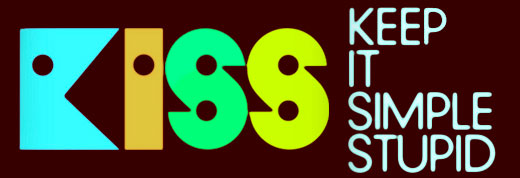It took years and years for me to get to the point of understanding what it means to tell a story. A Story…which is comprised as a Beginning, Middle, and a End.
Hmm…let’s think about this for a second. It is currently recommended that if you are creating online video content, that you keep it within a few time parameters.
1) If it is a single person speaking right at the camera…then a minute is about as long as the human attention span can stay engaged.
Jakob Nielsen’s “Talking-Head Video is Boring Online” states that “Eyetracking data show that users are easily distracted when watching video on websites, especially when the video shows a talking head and is optimized for broadcast rather than online viewing.”
2) If there are more shots beyond the headshot edited over a person speaking (a narrator), then a person’s attention span on average is willing to hang around for about 2.5 minutes. What do I mean? Well, there needs to be a variety of shot selection instead of just looking at the one talking head shot.
Now, given these parameters…let’s talk about Beginning, Middle, and End edited so that it tells a cohesive story between 1 to 2.5 minutes. OMG….seriously. Did you know that if you wrote a script for a video that is:
– one full page length on an 8.5×10 in piece of paper
– one inch margins
– single spaced
– 12 point font size
then it would take roughly 2.5 – 3 minutes to narrate the script. Most people have a hard time condensing a blog article less than five paragraphs. This is why I like Twitter…tell a story in 140 characters.
Many people in advertising and pr like to plan, and plan, and plan, and pre-plan the plan. You know, write the script with the message/vision in mind. Dictate what the narration is going to say, script each person in the video so that it is a controlled message. There is tremendous value in controlling the message.
I typically take a more journalistic approach to creating messages for the clients who choose to work with me.
- Identify the context by analyzing the Audience, Purpose, and Delivery.
- Identify the cast (people/subjects featured in video)
- Identify the storylines that provide context for each subject
- Write an overall OUTLINE of the story
- Schedule Interviews
- Outline the questions/points for the interview
- Interview each subject on-camera as a conversation
- After each interview, log and transcribe each interview
- Write final script
- Identify gaps in story
- Write narration and on-camera host scripts that interweave the interviews that display the story (Beginning, Middle, and End).
- Edit the story. Be prepared to deviate from script based on pacing and story execution. Place each piece of the puzzle together to support overall message.
- Revision Cycle with stakeholders
- Deliver the message to the target audience
Now this is a basic overview of the “journalistic approach” to storytelling. But really…it is the approach of letting the subjects tell the story. Using keen interview skills to listen to responses, and being prepared to alter/adjust the interview to pull relevant topics from the subject…bottomline, to meet the needs of the message. This most important part of this process is…LISTEN! Listening is the key to telling a good story. Listen to the subjects, listen to the message, listen to your instincts, listen to the responses on tape, listen to facial expressions of the subjects, listen to the clients reactions.
So how do we listen? Well, let’s talk about listening during a few keys areas of the process.
1) Listening during the interview.
Bob Dotson (NBC Correspondent) said the best way to listen during an interview is to ask a question/make a statement then sit there and force a response. Do not say a thing, create a silent void for the subject to fill. Do not sit there and do the typical “Ahh Haha” or the “Yes” while the person is talking…you will corrupt the audio recorded!
Listen to the subject by watching their facial expressions while you ask questions. This is key to seeing and understanding what makes the subject tick. Did you know that the first two or three questions are typically throw away questions. Questions that get the subject warmed up…use them to your advantage…make them feel comfortable and forget the camera is there. While you are listening to the responses…stay tuned into the how the subject’s mood changes so that you know when to ask a hard question. LISTENING will help you frame your interview session. Interviewing a subject is like telling a story…there is a beginning, middle, and end to the question an answer session.
2) Listening during the logging/transcription session
This is the time to watch, listen, and analyze whether the interview session translates the intended message. Listen for changes in the storyline both in the interview and the over-arching story that is being created. Listen and log “soundbites” that fit into the storyline. As you are logging/transcribing take note to the “soundbites” that might fit in the beginning middle, or end. Listen and take note to the comments….additional “B-Roll” or footage might be needed as complimentary video to reinforce the comments.
3) Listen during editing process
As you are constructing the message from the script…listen as the message flows. If it feels awkward, forced, contradicting, etc; then be willing to listen to your instinct to change so that you feel “at peace” with the pacing.
4) Listen during the revision process
Watch and listen to others as you present the story to your peers and the stakeholders. Watch their facial expressions. Notice when each person starts to lose interest by playing with their iPhone, or looks away. Notice when there is a complimentary emotion that matches the moment in time in the story. If someone cracks a joke, then the audience should smile or laugh. If not, the editing did not execute the purpose. Listen to the responses and be willing to step away from the creative enterprise to think critically about the overarching goal. Be willing to question and listen to why each person had a particular response
LISTENING HELPS US TELL STORIES!!!!








